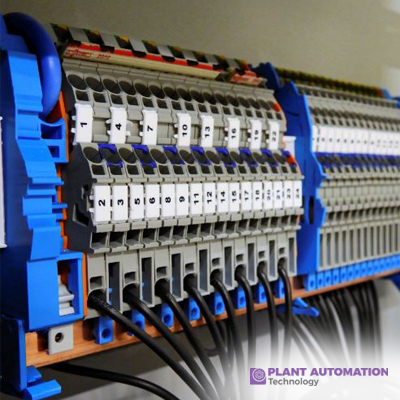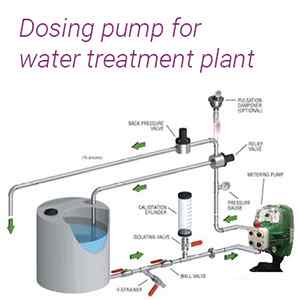The Role of Switchgear & Switchboard Apparatus in Industrial Manufacturing

Electronic manufacturing services are integral to modern industrial operations. In electronic manufacturing services, efficient management of switchgear and switchboard apparatus is essential.
Electronic manufacturing services rely heavily on advanced switchboard systems for optimal production outcomes. Maintenance of switchgear is key in electronic manufacturing services to sustain reliable power distribution. Electronic manufacturing services encompass diverse technological applications within industrial manufacturing. Effective utilization of switchgear enhances operational efficiency in electronic manufacturing services. Streamlining electrical systems is critical in electronic manufacturing services for optimal performance. Continuous innovation in switchboard apparatus drives progress in electronic manufacturing services.
Motor Circuit Protectors
Switchgear and switchboard apparatus, along with motor circuit protectors, form the backbone of electrical power distribution and management in industrial manufacturing settings. These technologies work hand in hand to ensure safe, efficient, and reliable operation of machinery and equipment.
Switchgear serves as the central hub for controlling the flow of electricity within a facility. It includes various components such as circuit breakers, fuses, and relays that safeguard electrical circuits from overloads and short circuits. Motor circuit protectors are specifically designed to safeguard motors from electrical faults and damage. These devices monitor motor currents and trip in case of abnormal conditions such as overloads or short circuits. By interrupting power to the motor when necessary, motor circuit protectors prevent overheating and potential motor failures, thereby extending equipment lifespan and reducing maintenance costs.
Switchgear also enables the isolation of faulty circuits for maintenance purposes, minimizing downtime and enhancing operational continuity.
Switchboard apparatus, on the other hand, encompasses the panels and distribution boards where electrical circuits are routed and monitored. It provides the interface for operators to manage power distribution, monitor voltage levels, and control the operation of equipment. Advanced switchboard systems integrate digital controls and monitoring capabilities, allowing for real-time data analysis and predictive maintenance.
Motor circuit protectors play a crucial role in industrial automation processes by safeguarding motors and ensuring operational safety. In industrial manufacturing, the synergy between switchgear, switchboard apparatus, and motor circuit protectors ensures efficient power distribution, equipment protection, and operational safety. Regular maintenance and upgrades of these systems are essential to uphold performance standards, mitigate risks, and optimize production processes. As technology advances, the integration of smart monitoring and control features further enhances the capabilities of these critical components, driving continuous improvement in industrial electrical systems.
Power control systems
Switchgear and switchboard apparatus are integral components of power control systems in industrial manufacturing environments. These technologies play a crucial role in managing and distributing electrical power to machinery and equipment. Switchgear ensures safe operation by controlling the flow of electricity, protecting against overloads and short circuits. Switchboard apparatus provides the interface for monitoring and managing power distribution, enabling operators to optimize performance and prevent downtime.
In modern industrial settings, power control systems rely heavily on advanced switchgear and switchboard technologies. These systems integrate digital controls and monitoring capabilities, allowing for real-time data analysis and predictive maintenance. Regular maintenance and upgrades of switchgear and switchboard systems are essential to ensure efficiency and reliability in power distribution.
Power control systems encompass a range of technological applications within industrial manufacturing, from controlling motor operations to managing lighting and HVAC systems. Effective management of switchgear and switchboard apparatus is critical for sustaining optimal performance and safety standards. Integration of smart monitoring and control features further enhances the capabilities of power control systems, driving efficiency and innovation in industrial power management.
Safety operating procedures
Switchgear and switchboard apparatus are essential components in industrial manufacturing for safety operating procedures. These technologies ensure safe operation by controlling the flow of electricity and protecting against hazards such as overloads and short circuits. Safety operating procedures encompass regular maintenance and inspection of switchgear and switchboard systems to prevent potential risks and ensure reliable performance.
In modern industrial environments, adherence to safety operating procedures is crucial to protect personnel and equipment from electrical hazards. Operators are trained in proper handling and maintenance of switchgear and switchboard apparatus, following industry-standard protocols for safe operation.
Regular audits and compliance checks are conducted to verify that safety operating procedures are strictly adhered to. Emergency response plans are also implemented to address potential safety incidents and minimize downtime in case of faults or emergencies.
The integration of advanced monitoring and safety features in switchgear and switchboard systems further enhances safety protocols. Continuous training and education on safety operating procedures are essential for maintaining a safe working environment in industrial manufacturing settings.
Exponential power
Switchgear and switchboard apparatus are crucial elements in industrial manufacturing for ensuring safety operating procedures. These technologies not only facilitate safe operation by controlling the flow of electricity and mitigating hazards such as overloads and short circuits but also contribute to exponential power management capabilities.
In modern industrial environments, the adoption of exponential power management strategies is imperative for efficient and reliable operation. Switchgear and switchboard apparatus play a pivotal role in implementing safety protocols that align with exponential power management principles, ensuring optimal performance and minimizing risks.
Safety operating procedures, including regular maintenance and inspection of switchgear and switchboard systems, are integral to sustaining safe operational standards. Training programs for personnel emphasize the importance of adhering to safety protocols and utilizing exponential power management techniques to enhance overall efficiency and safety.
Continuous monitoring and evaluation of exponential power management practices ensure compliance with industry standards and regulations, further strengthening the reliability and effectiveness of power distribution systems. Integration of advanced technologies enhances real-time decision-making capabilities, leading to optimized power utilization and enhanced equipment performance.
Overall, the synergy between switchgear, switchboard apparatus, safety operating procedures, and exponential power management strategies is paramount in industrial manufacturing environments, driving efficiency, reliability, and safety across power distribution systems.
Tools and Machines
Switchgear and switchboard apparatus are vital components in industrial manufacturing, serving as the backbone of tools and machines operation. These technologies ensure efficient power distribution and safe operation of tools and machines by controlling the flow of electricity and protecting against overloads and short circuits. Proper maintenance and regular inspection of switchgear and switchboard systems are essential to optimize the performance of tools and machines.
In modern industrial settings, the integration of advanced technologies in switchgear and switchboard apparatus enhances control and monitoring capabilities, leading to improved efficiency and reliability of tools and machines. Operators are trained in safe handling and operation of tools and machines, following industry-standard protocols to minimize risks and maximize productivity.
Continuous upgrades and innovations in tools and machines require adaptive power management strategies enabled by switchgear and switchboard systems. Real-time monitoring and data analysis allow for optimal utilization of power resources, contributing to cost-effective and sustainable manufacturing practices.
The integration of smart technologies in tools and machines further enhances automation and efficiency in industrial processes. Collaborative operation between tools, machines, and power control systems ensures seamless production and reduced downtime.
Overall, switchgear and switchboard apparatus are indispensable in facilitating the operation of tools and machines in industrial manufacturing, driving productivity and innovation across manufacturing environments.
NEC Electrical
Switchgear and switchboard apparatus are fundamental components in industrial manufacturing, especially concerning NEC Electrical compliance. These technologies ensure safe and efficient power distribution in accordance with NEC Electrical standards by controlling the flow of electricity and mitigating risks such as overloads and short circuits. Regular inspection and maintenance of switchgear and switchboard systems are critical to meeting NEC Electrical requirements and ensuring compliance.
In modern industrial settings, adhering to NEC Electrical standards is essential for safety and legal compliance. Switchgear and switchboard apparatus are key components in ensuring NEC Electrical compliance through proper installation, operation, and maintenance practices. Training programs for personnel emphasize the importance of NEC Electrical guidelines in power distribution and equipment operation.
Continuous monitoring and evaluation of NEC Electrical compliance ensure adherence to industry regulations and standards. Integration of smart technologies in switchgear and switchboard systems further enhances NEC Electrical management, allowing for real-time monitoring and analysis of electrical parameters.
The collaborative operation between NEC Electrical standards and industrial manufacturing processes is vital for maintaining safety, reliability, and efficiency in power distribution. Efforts towards NEC Electrical compliance are integral in sustaining optimal performance and preventing electrical hazards in industrial environments.
Electrical Switchgear
Electrical Switchgear plays a pivotal role in industrial manufacturing, serving as the cornerstone of power distribution systems. Electrical Switchgear is crucial for efficiently controlling and managing the flow of electricity within industrial facilities. It encompasses various components such as circuit breakers, fuses, and relays that ensure safe operation by protecting against overloads and short circuits. Regular maintenance and upkeep of Electrical Switchgear are essential to maintain reliable power distribution and compliance with industry standards.
In modern industrial settings, Electrical Switchgear is paramount for ensuring smooth power distribution and safety protocols. Operators are trained to operate and maintain Electrical Switchgear according to manufacturer guidelines and safety procedures. Continuous monitoring and evaluation of Electrical Switchgear performance are conducted to detect and address any potential issues promptly.
The integration of advanced technologies in Electrical Switchgear enhances control and monitoring capabilities, enabling real-time data analysis and predictive maintenance. Efforts towards Electrical Switchgear optimization contribute to improved efficiency, reduced downtime, and enhanced safety in industrial operations.
Electrical Switchgear is central to achieving optimal power management and equipment protection in industrial manufacturing. Adherence to best practices and standards in Electrical Switchgear usage is crucial for maintaining reliable power supply and ensuring smooth operation of machinery and equipment.
Wireless Electrical
Wireless Electrical systems are revolutionizing industrial manufacturing, offering unprecedented flexibility and efficiency in power distribution. Wireless Electrical technology eliminates the need for traditional wiring, enabling remote monitoring and control of power systems. This innovative approach to electrical infrastructure simplifies installation and maintenance, reducing downtime and costs associated with cabling.
In modern industrial settings, Wireless Electrical systems are pivotal for streamlining operations and enhancing safety. Operators can manage and monitor power distribution from anywhere within the facility, improving response times to emergencies and optimizing energy usage. The reliability and security of Wireless Electrical technology have made it a preferred choice for industrial applications.
Integration of Wireless Electrical systems with smart technologies enables real-time data analytics and predictive maintenance, leading to improved equipment performance and uptime. Continuous advancements in Wireless Electrical technology are driving innovation and transforming industrial power management.
The adoption of Wireless Electrical systems in industrial manufacturing is shaping the future of power distribution, offering scalability, reliability, and efficiency in power management. Investments in Wireless Electrical infrastructure are key to sustaining competitive advantages and meeting the evolving demands of modern industry.
Conclusion:
In conclusion, the integration of electronic manufacturing services with advanced technologies such as motor circuit protectors, power control systems, safety operating procedures, exponential power management, tools and machines, NEC Electrical compliance, electrical switchgear, and wireless electrical systems is paramount in modern industrial operations. These components form the backbone of efficient and reliable power distribution and equipment protection, ensuring optimal production outcomes and operational safety. As industries evolve, the continuous innovation and adoption of these technologies drive efficiency, reliability, and sustainability in industrial manufacturing, positioning companies for success in a dynamic and competitive marketplace







